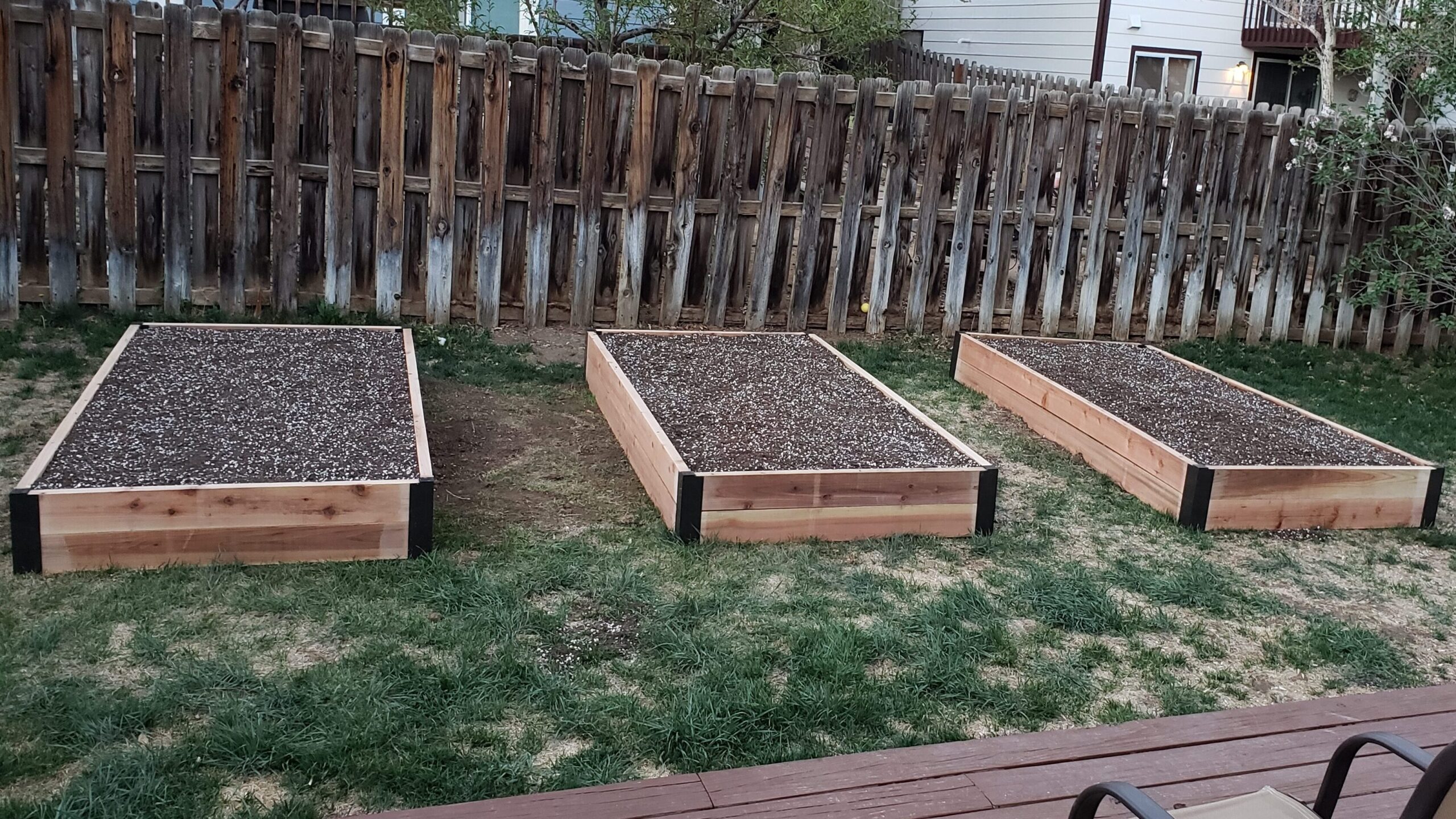Block style, raised bed vegetable gardening has many advantages including less soil compaction, and higher yields with less weeding and less watering.
What is the best way to construct a raised bed?
Raised beds are easy to construct with 2 X 6, 2 X 8, or 2 X 10 construction lumber or other landscaping timbers. Untreated construction lumber lasts for many years and is less prone to warping than is treated lumber. Four feet is an ideal width for plots, because it allows gardeners to easily reach into the bed without stepping into it. The length of the plot can be chosen to fit the space. Allow two to three feet between beds for walkways, and for the ease of wheelbarrow use. Raised beds with separating walkways minimize compaction to plant growing beds.
Make the box by simply attaching four-foot end sections onto the box sides, with long decking screws, for a secure connection.
Place the box in the desired location and fill with soil. Ideally this soil will be similar to the site soil and should contain not more than 5% organic materials. If the added soil is different in composition, it should be mixed with the soil below the box, to avoid a textural interface which might interfere with water and air movement. When purchasing soil amendments, and or top soil, be cautious, as some of these products may contain high salts.



What should I use as mulch in raised beds?
When mulching between raised beds, use wood chips. Dried grass clippings, leaves, or compost works well to mulch around the plants inside the raised bed. Raised beds are easy to water with drip irrigation and soaker hoses, thus minimizing water usage.



